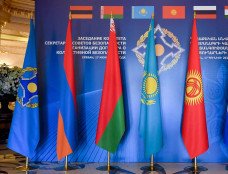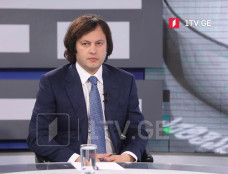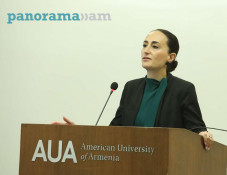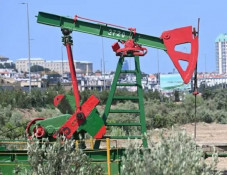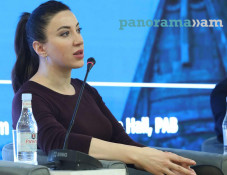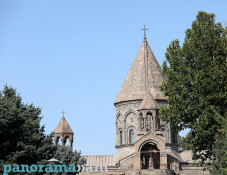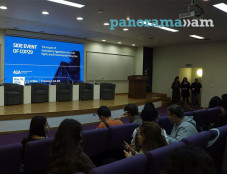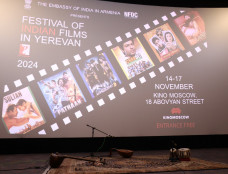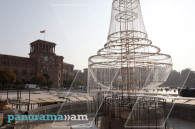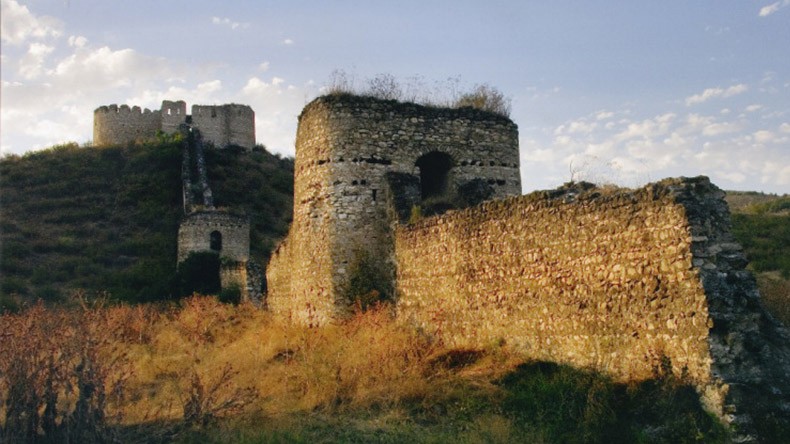
Destination Artsakh: NKR tourism saw 15.5 percent growth in 2015 due to proper promotion of sights
Tourism makes a significant contribution to the economic, social and environmental well-being of Artsakhians. The impact of tourism goes beyond creating jobs and providing foreign exchange and revenue. One of the main outcomes of tourism development is, of course, the strengthening of the national brand of Artsakh and its international profile, Destination Artsakh website writes.
In 2015, 15.5 percent of tourism growth was registered according to the Ministry of Economy of the Nagorno Karabakh Republic (NKR).
Artsakh, being the land of ancient historical monuments and magnificent landscapes, always has something to offer, and its glorious traditions and rich cultural heritage are linked with the development of tourism. Its picturesque canyons, healthy environment and mineral and hot springs attract visitors from all over the world, the website writes.
According to Destination Artsakh, this is also a result of marketing and PR activities focused on development and promotion of favorable image of the NKR as a competitive travel destination. It is worth mentioning that the main part of activities for development of tourism was made by the department of tourism in accordance with the program of tourism development.
In 2015, the NKR participated in five international tourism exhibitions, festivals and forums held in Armenia. A meeting was organized in Moscow with Russian tour operators and journalists, where tourism potential of Artsakh was presented and some essential arrangements were made. Over the past year, the total number of the hotels registered in the country reached 43; a travel agency and four tour operators received registration certificates. During the recent years, more than forty road signboards have been set near the main travel attractions.
Two festivals were organized during the previous year: Mulberry festival near Amaras monastery and Artsakh Wine Festival in Togh village. The total number of the guests at these festivals was about six thousand people. In recent two years, Tigranakert state reserve hosted more than 20 thousand tourists becoming one of the main tourist attractions in Artsakh.
Among other significant achievements in 2015, the website notes the release of the first travel guidebook about Artsakh, as well as the wide promotion of Artsakh travel potential in European mass media: articles were published in the Italian Corierre della Sera and Messagerio di Saint Antonio, the German Die Welt and in the British Wanderlust.
In another article, Destination Artsakh takes its readers to a tour in Nikol Duman house-museum and ethnographic district of Tsaghkashat village.
“Once you visit an Artsakhian village you will never forget that experience. A difficult, but very simple lifestyle, traditions that were kept since the Middle Ages, good attitude to guests: this is only a part of positive characters of Artsakhian village…” the website writes.
According to the website, Tsaghkashat village is one of those villages of Artsakh that should be visited by every traveler whose aim is to feel Artsakh. Tsaghkashat is a quaint village of roughly 200 indigenous inhabitants who are mainly occupied with cattle breeding and wheat farming.
In this village, an entire ethnographic quarter was restored with a house-museum of a freedom fighter Nikol Duman. The prominent political and military figure of the end 19th and the beginning of 20th century Nikol Duman was born in Tsaghkashat village of Artsakh in the family of a village cleric. Duman was a teacher, but he had to change his lifestyle and become a freedom fighter to defend Armenians.
The home where Nikol Duman lived now serves as a house-museum, where personal belongings, letters and weapons of the famous Fidayi (freedom fighter) are exhibited. The second floor of the house-museum was restored as a dwelling of villagers of the 19th century. Visitors can see here the old couch with rugs and cushions woolen carpets, hung from the ceiling, oak table with chairs. Of particular interest are the niches-storage of utensils and other household items.
Adjacent to house-museum is a utility room, traditional for the Karabakh life of the 19th century. Collected here the original samples provide a complete picture of economic activity of Karabakh family. A little pathway through the garden takes us to the next building, Maran or a Tavern, where one can sample local cuisine like homemade bread, cheese, pickles, and of course, Karabakh’s specialty, jengyalov hats [flatbread with herbs]. Here, one can also taste Artsakhian wines. Adjacent to the Maran, there is a little souvenir shop where the visitors can buy traditional souvenirs, tea, herbs, etc, Destination Artsakh recommends.
Main outbuildings of the 19th century, including a bakery-tonratun, are refurbished in the yard. The “Oriental Room” is located in the cellar of the 7th building. In this charming room with a medieval eastern flair, one can relax, smoke nargile (water pipe) and savor eastern sweets.
Destination Artsakh has also published photos of the NKR capital Stepanakert, nature and other sights of Artsakh from a bird’s eye view.
In October 2015, a project to create an ecovillage was launched aiming at developing the tourism sector of the Nagorno-Karabakh Republic (Artsakh). To carry out the project, USD 20 million was allocated and a school for young guides was established. The measures taken up for developing the tourism sector in 2015 resulted in a significant growth of the number of tourists visiting the NKR.
Related news
- Located on one of trails of Great Silk Road Artsakh is place, where every traveler should visit once in lifetime
- Karabakh President attends Zhengyalov Hats Festival in Tsaghkashat village
- NKR tourism Department: Foreign Ministry of Azerbaijan spreads disinformation regarding tourists’ safety
Newsfeed
Videos








